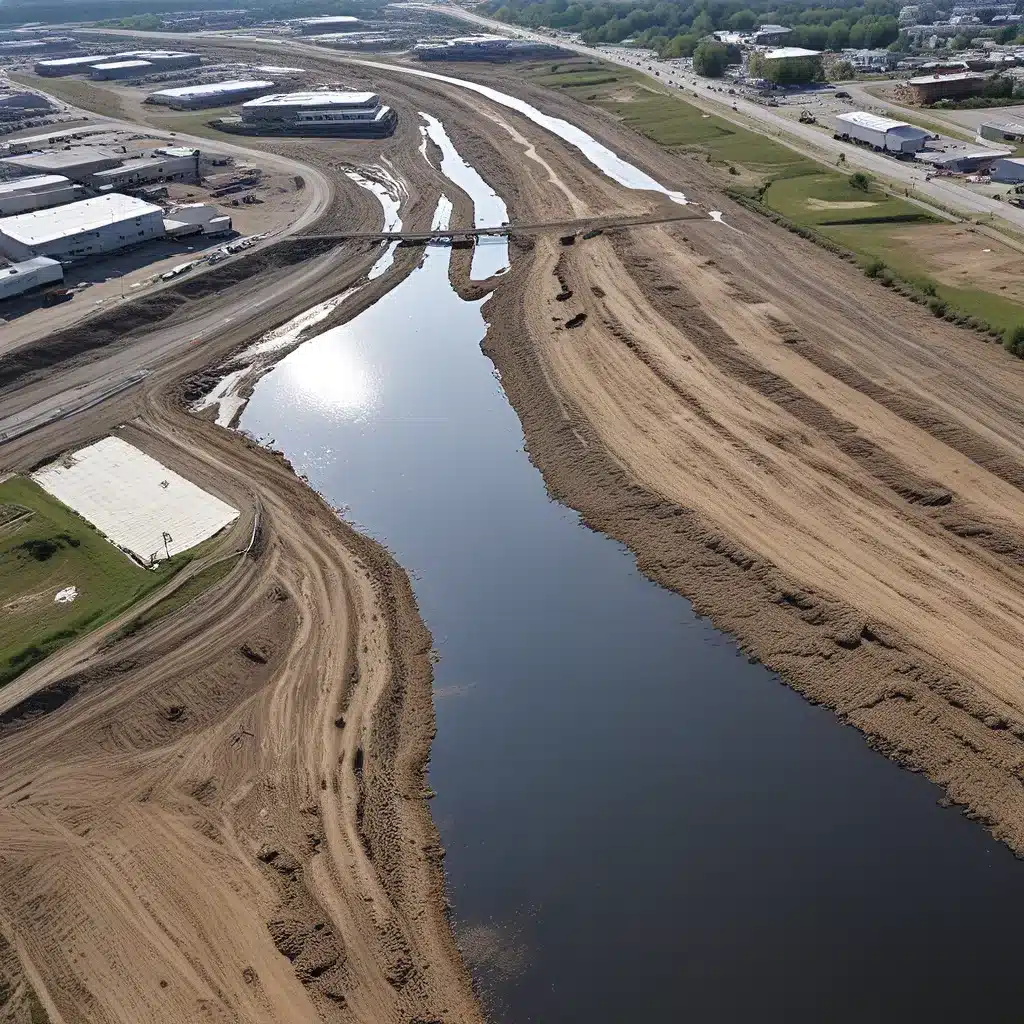
Diving Into the Murky Waters of Environmental Cleanup
Ah, the joys of contaminated site remediation – where the challenges never cease and the solutions often feel like a game of environmental Tetris. As an environmental enthusiast, I’ve found myself knee-deep in this complex web of regulations, technical obstacles, and high-stakes decision-making. But you know what they say, “Where there’s muck, there’s brass!” (or at least, that’s what I tell myself on the tougher days).
You see, when it comes to cleaning up these contaminated sites, it’s not as simple as just slapping on a fresh coat of paint and calling it a day. Oh no, my friend. We’re talking about a veritable minefield of hazardous substances, intricate groundwater systems, and a regulatory landscape that can make even the most seasoned environmental engineer scratch their head in bewilderment.
Navigating the Regulatory Maze
One of the biggest hurdles in contaminated site remediation is the sheer complexity of the regulatory framework. It’s like trying to find your way through a labyrinth blindfolded – each state, each federal agency, and even each local municipality seems to have its own set of rules, guidelines, and hoops to jump through. And let’s not forget the ever-evolving landscape of environmental regulations, where new contaminants like PFAS (per- and polyfluoroalkyl substances) can suddenly become the hot-button issue, throwing a wrench into even the best-laid plans.
As the Bureau Veritas team has noted, the prevalence of PFAS in our environment and their persistence in the environment have posed significant challenges to ecosystems and human health. Regulatory agencies worldwide have scrambled to address the issue, leading to a patchwork of state-level initiatives and the potential for PFAS to be designated as hazardous substances under CERCLA (the Comprehensive Environmental Response, Compensation, and Liability Act).
Navigating the Technical Complexities
But it’s not just the regulatory maze that makes contaminated site remediation a daunting task. The technical complexities involved can be enough to make even the most seasoned environmental engineer reach for the aspirin. From understanding the intricate workings of groundwater systems to determining the most effective remediation technologies for the specific contaminants present, it’s a delicate dance of science, engineering, and a whole lot of trial and error.
As the team at Pinnacle Engineering knows all too well, resolving these complex environmental challenges requires a collaborative approach, formulating cost-effective remediation strategies and ensuring compliance. Their experience in navigating the evolving landscape of environmental regulations, from CERCLA to the Clean Water Act, has proven invaluable in helping clients tackle their most pressing environmental issues.
Balancing Costs and Sustainability
And let’s not forget the financial aspect of all this. Contaminated site remediation can be a costly endeavor, with price tags that can make even the deepest-pocketed organizations wince. But it’s not just about the bottom line – it’s also about finding solutions that are sustainable, both environmentally and economically.
The team at Brownstein Hyatt Farber Schreck knows a thing or two about balancing these competing priorities. Their work on projects like the Chatfield Reservoir in Colorado, which involved the reallocation of water to an environmental pool, demonstrates their ability to navigate the complex intersection of natural resources, policy, and financial considerations.
Embracing Innovative Solutions
But where there’s a will, there’s a way – and the environmental community has proven time and time again that it’s up for the challenge. From the latest advancements in remediation technologies to the creative use of public-private partnerships, there’s no shortage of innovative solutions on the table.
At Inland Waters, Inc., for example, we’ve been at the forefront of incorporating green infrastructure and sustainable water management practices into our contaminated site remediation projects. By leveraging nature-based solutions, we’re not only addressing the immediate environmental concerns but also building long-term resilience and promoting the responsible use of our precious water resources.
Embracing Collaboration and Continuous Learning
And let’s not forget the importance of collaboration and continuous learning in this ever-evolving field. By bringing together experts from various disciplines – from hydrogeologists and environmental engineers to regulatory specialists and financial analysts – we can tackle these complex challenges from multiple angles, drawing on a wealth of knowledge and diverse perspectives.
After all, as the adage goes, “It takes a village to raise a child” – and in the case of contaminated site remediation, it takes a veritable community of environmental professionals to chart a course towards sustainable solutions.
Navigating the Future with Confidence
So, while the road ahead may be paved with uncertainties and technical hurdles, I can’t help but feel a sense of optimism and excitement. With the right mindset, the right team, and a relentless commitment to innovation, I believe we can navigate the complexities of contaminated site remediation and emerge as champions of sustainable water management.
Who knows, maybe one day we’ll look back on these challenges and laugh – or at the very least, breathe a sigh of relief as we sip our sustainably-sourced, PFAS-free water. After all, as they say, “A little bit of muck never hurt anyone” (okay, maybe that’s not a real saying, but you get the idea).


